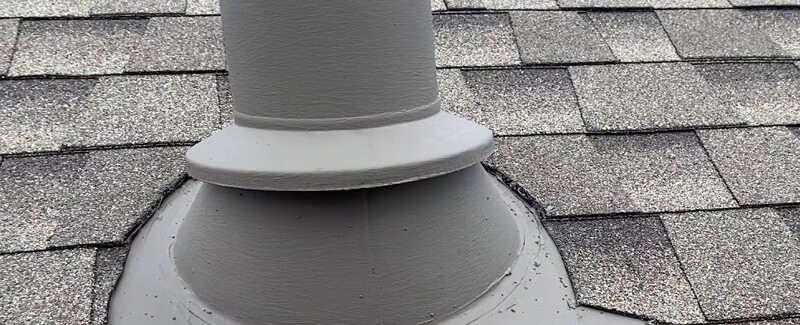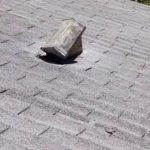What does the process of hand sealing entail? The job requires roof cement and a caulking gun. Dabs of cement must be applied to the underside of every shingle. Because too much cement can result in blistering or dripping down the shingle’s face, each dab should be about the size of a quarter. Then, the shingle can be pressed into the substrate or another shingle with the cement in between. The task is much more time-consuming than simply using adhesive strips.
The adherence of shingles to a roof’s substrate normally requires more than one fastening method. While properly driven nails are imperative to the security of the roofing system, adhesives are used with them to ensure that strong winds are unable to blow materials off the surface. Most shingles are manufactured with an asphaltic bonding strip that attaches to the roofing components underneath with great force. Sometimes, roof cement is applied as a precaution. Austin roofing professionals know the specifications for shingle installation and the best sealants for a variety of situations. Whether the roofers are using three-tab or laminated shingles, they have the expertise to build a solid roof covering that will not easily separate.
The adhesive strip located on either the top middle or bottom backside of the shingle is a special type of asphalt that softens when exposed to heat. It then forms and cures so it becomes firmly attached to the shingles above it and below it as the surroundings cool. Sometimes the manufacturer mixes the asphalt with a modifier that works like SBS modified bitumen and allows the adhesive to bond at a significantly lower temperature. Experts from the NRCA and the ARMA disagree about the amount of time that the asphalt must stay heated in order to create the adherence; some estimate that several days will take care of it while others recommend a few weeks.
Nevertheless, the shingles tightly adhere once the substance has hardened.
The sealing of these shingles is generally easy during the warm months. In wintertime, however, they don’t always attach properly. Unless the temperatures rise to a high degree for long enough to start the maleation process, the shingles just lie on the roof as dirt and debris are consistently blown between the layers. Meanwhile, the asphalt is drying out and the roofing components are vulnerable to wind uplift. If the system remains in this condition for several months, then the adhesive strips may never seal. Self-adhering shingles that are laid during cold weather must be hand-sealed in order to prevent these damaging effects.
Hand sealing is also necessary when shingles are placed on a steep slope. The force of gravity, which helps the self-sealing process on flat or low slope roofs, is not strong enough to apply sufficient pressure to the shingles on roofs with pitches higher than 21:12. The tiresome task of hand sealing often increases labor costs tremendously, but it can save thousands of dollars in repairs and replacements that result from faulty adhesion.



